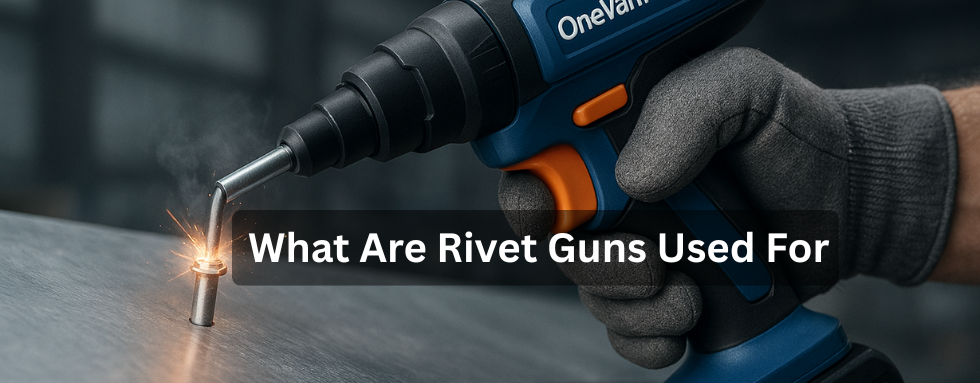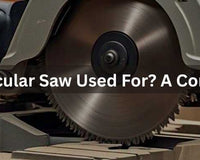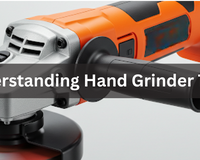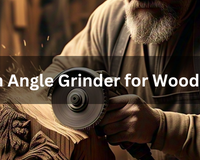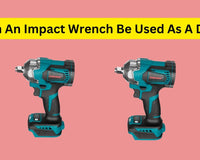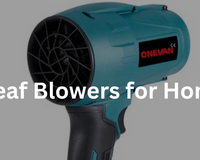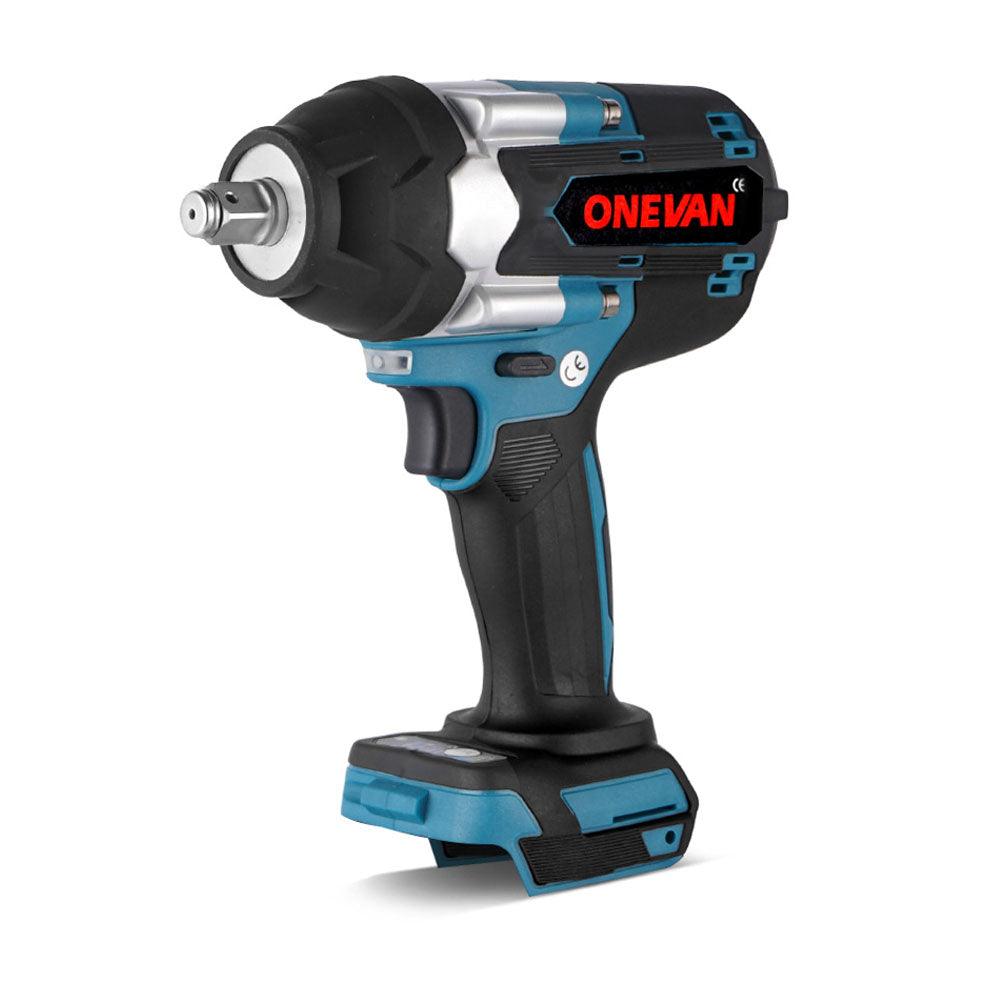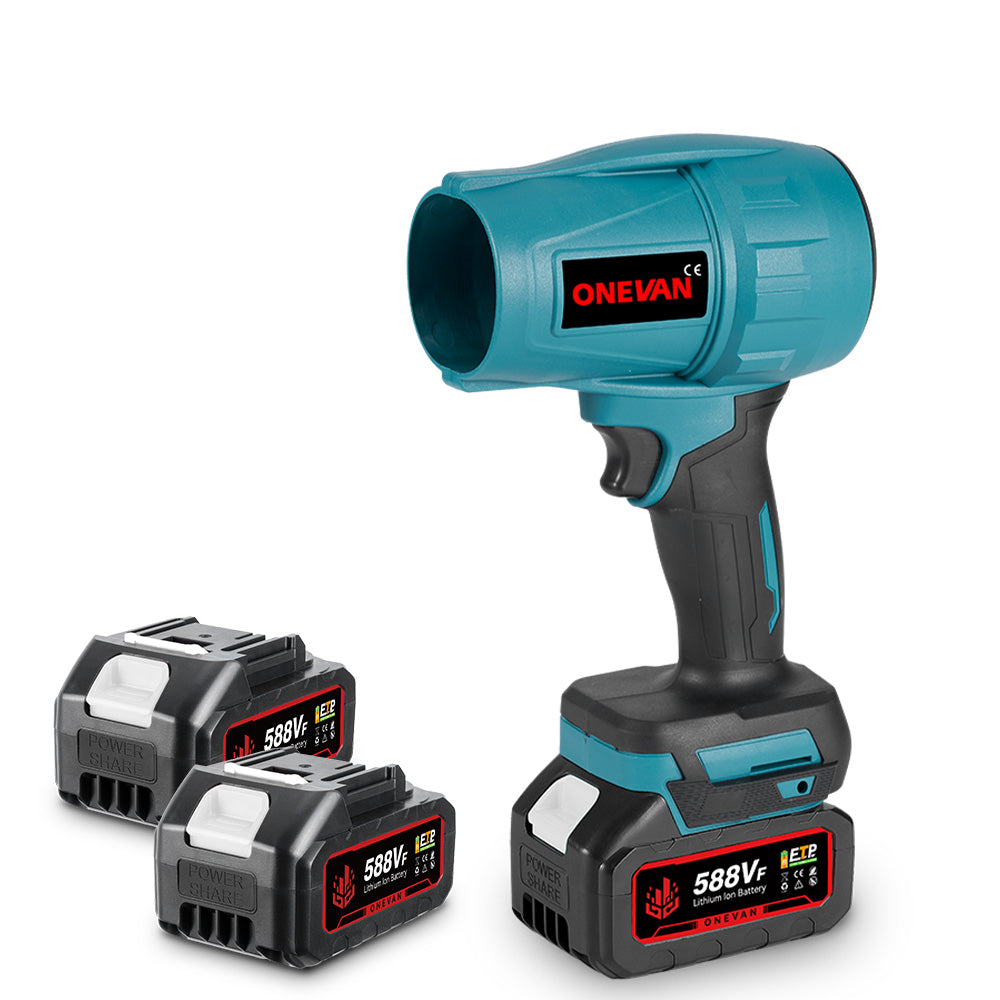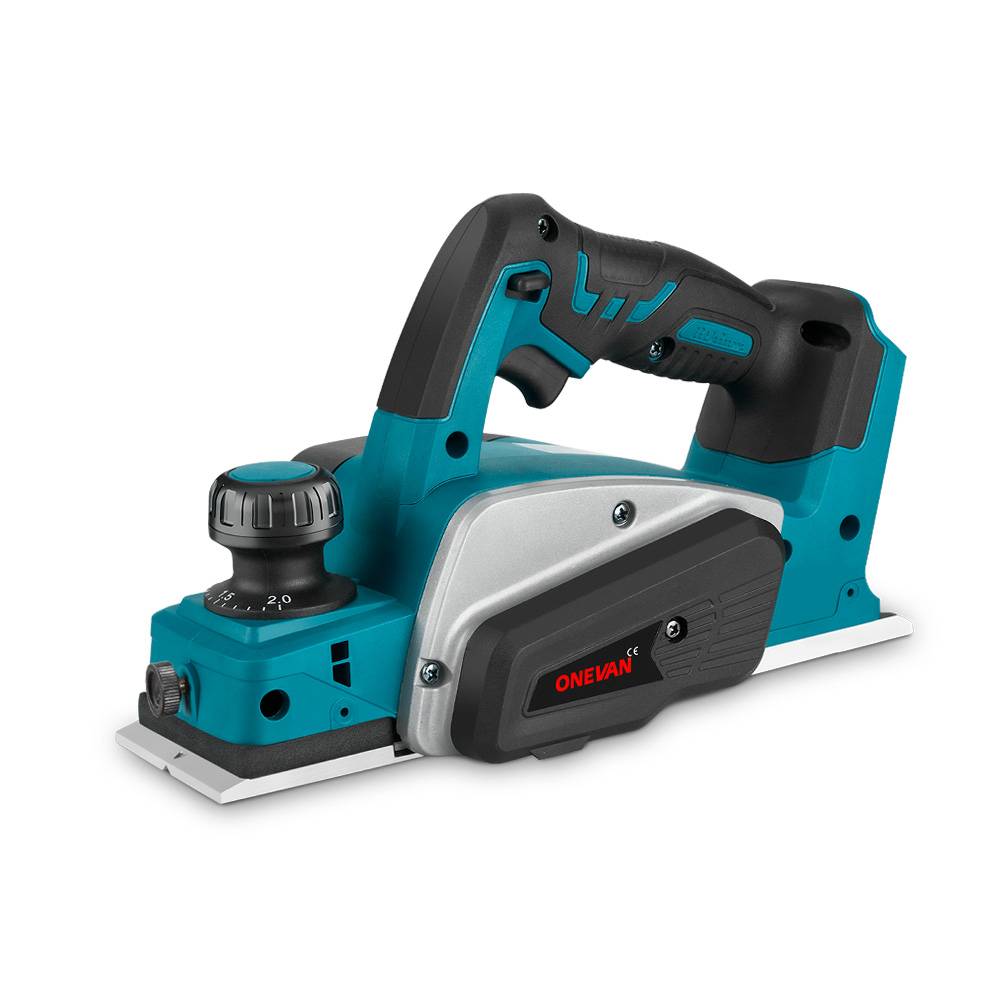Rivet guns are important fastening tools that you can find in the manufacturing, construction, and repair industries. You will find rivet guns creating permanent mechanical joints in applications where welding is impractical, such as thin metals or heat-sensitive materials. Therefore, industries significantly depend on rivet guns daily.
Aerospace manufacturers assemble aircraft fuselages. Automotive technicians repair vehicle bodies. Construction workers secure steel frameworks. The tool is quite versatile and extends from heavy industrial fabrication to delicate leather crafting.
1. Understanding Rivet Guns
What Is a Rivet Gun?
A rivet gun is a mechanical tool designed to install rivets into pre-drilled holes. The tool deforms the tail end of the rivet. This deformation creates a permanent fastening connection between two or more materials. You can choose from four primary rivet gun types.
Manual rivet guns operate through hand lever compression. You squeeze the handles repeatedly. This action pulls the rivet mandrel through the rivet body.
Pneumatic rivet guns connect to compressed air systems. Air pressure delivers 90-120 PSI to drive rivets rapidly.
Cordless rivet guns contain rechargeable battery packs. Lithium-ion batteries typically provide an 18-20V output. A high-performance option, ONEVAN 20000N Brushless Cordless Rivet Gun, exemplifies this type by offering untethered mobility for field work.
Hydraulic rivet guns utilize fluid pressure systems. These tools generate forces exceeding 3000 pounds for structural riveting applications.
How Rivet Guns Work
The rivet gun mechanism operates through mandrel tension. First, you need to insert a blind rivet into pre-drilled aligned holes. The rivet consists of a tubular body and a central mandrel stem. Then, you should position the rivet gun nosepiece over the mandrel. The tool's jaws grip the mandrel firmly.
After that, you activate the trigger. The pulling mechanism retracts. This retraction pulls the mandrel backward through the rivet body. Consequently, the rivet deforms under pressure. The deformation creates a secondary head behind the workpiece. The mandrel continues retracting until it reaches its breaking point.
Finally, the mandrel snaps at the predetermined break notch. The installation completes in 2 to 4 seconds.
2. Advantages of Using Rivet Guns for Fastening
Speed and Efficiency
Rivet guns are capable of installing fasteners at exceptional speeds. In optimal conditions with appropriate material types and setups, a skilled operator can complete 60 to 80 rivets per minute using pneumatic tools. Manual bolting achieves only 10-15 fasteners per minute. Stainless steel rivets are used to secure heat shields to exhaust manifolds due to their heat resistance and corrosion protection.
Permanent and Durable ,J,oints,
Rivet joints create permanent connections. You cannot remove rivets without drilling them out. The cold forming process work-hardens the rivet material. Aluminum rivets achieve shear strengths of 20,000 to 30,000 PSI after installation. Steel rivets have a shear strength of 50,000 to 70,000 PSI.
Lightweight ,C,ompared to ,B,olts or ,S,crews,
Weight considerations favor riveted connections. A 1/8-inch aluminum rivet weighs 0.02 ounces. An equivalent grade 5 bolt with nut and washer weighs 0.15 ounces. You save 87% weight per fastener. Aircraft manufacturers save hundreds of pounds using rivets instead of bolts.
Vibration and ,S,hock ,R,esistance
In addition, Vibration resistance is a key feature that highlights the advantages of rivets over other fastening methods, as they effectively prevent loosening under dynamic loads. Rivets contain no moving parts or threads. The solid interference fit prevents loosening. Jet engines generate vibrations exceeding 10G acceleration. Riveted engine cowlings maintain integrity. Meanwhile, bolted assemblies often require constant re-tightening and the application of thread-locking compounds to prevent loosening under vibration.
3. Primary Uses of Rivet Guns Across Various Industries
Automotive Industry
Automotive bodywork relies heavily on rivet gun applications. Body shops use rivet guns to attach fenders, quarter panels, and door skins. Spot welding creates heat distortion in thin-gauge metals. Rivets eliminate warping issues. Collision repair technicians install 40 to 60 rivets per panel replacement.
Interior panel fastening requires specific rivet types. Dashboard assemblies use plastic push rivets. Door card installations need 1/8-inch aluminum rivets spaced 4 inches apart. Trunk liner attachments utilize nylon body rivets. These fasteners prevent rattling and allow panel removal for service access.
Furthermore, exhaust system components can be exposed to extreme temperatures. Stainless steel rivets secure heat shields to exhaust manifolds. Sometimes operating temperatures reach 1200°F. Bolts seize from thermal cycling. Rivets maintain clamp force through expansion and contraction cycles.
Aerospace Applications
Aircraft frame construction depends entirely on riveting technology. A Boeing 747 contains approximately 6 million rivets. Fuselage skin panels overlap 1 to 2 inches. Rivet spacing follows the 4-to-6-diameter spacing rule. A 1/8-inch rivet requires a minimum spacing of 0.5 inches. This arrangement creates continuous load paths that enhance the structural integrity of the fuselage.
Aerospace rivets meet stringent material specifications. To begin, 2117-T4 aluminum rivets are used for general airframe applications. Shear strength reaches 26,000 PSI minimum. Next, 7050-T73 aluminum rivets are used for high-stress locations. Ultimate tensile strength exceeds 70,000 PSI. Monel rivets resist salt corrosion in marine patrol aircraft.
Metal Fabrication and Manufacturing
Sheet metal joining operations consume millions of rivets daily. HVAC duct fabrication uses 3/16-inch aluminum rivets. Duct seams require watertight connections. Rivet spacing requires maintaining a distance of 3 inches between each rivet to ensure watertight connections. A standard residential duct system contains 200 to 300 rivets.
Appliance manufacturing standardizes on self-piercing rivets. Washing machine cabinets are made from two 0.8mm steel sheets. The rivet pierces both sheets simultaneously without pre-drilling. For self-piercing rivets in manufacturing applications, installation time can drop to as low as 0.8 seconds per fastener. A single washing machine contains 45 to 60 self-piercing rivets.
In turn, industrial machinery assembly utilizes structural rivets. The conveyor frame construction uses 1/4-inch steel structural rivets. These rivets develop 12,000-pound shear capacity. The blind installation capability of these rivets allows access to box beam interiors from one side, significantly simplifying assembly for structures where space is limited. Large conveyor systems require 500-800 structural rivets for complete assembly.
Construction Industry
Steel framework riveting dominated construction until the 1960s. Historic buildings like the Empire State Building contain over 7 million rivets. Modern steel construction has largely shifted to bolting, primarily due to the faster installation times and the flexibility it provides in structural modifications.
Besides, renovation work also requires rivet matching. Restoration contractors use hot-driven rivets to maintain structural authenticity. Facade installation depends heavily on modern blind riveting. For example, aluminum composite panel cladding attaches to steel subframes. Similarly, stainless steel rivets prevent galvanic corrosion. Panel weight reaches 8 to 12 pounds per square yard. Each aluminum composite panel, sized to specific wind load requirements, typically requires 12 to 16 rivets for adequate resistance. Furthermore, high-rise buildings contain 50,000 to 100,000 facade rivets. Moreover, roofing and gutter systems depend on sealed riveting. Standing seam metal roofs use blind rivets with neoprene washers. The washer compresses during installation. This compression creates waterproof seals.
Electronics and Electrical Equipment
Electronics chassis construction utilizes miniature rivets. Computer server cases join 1.0mm aluminum sheets. Blind rivets measuring 3/32 inch in diameter provide sufficient strength. The low installation force prevents sheet dimpling. A 4U server chassis contains 30 to 40 rivets securing panels and brackets.
Electrical enclosure manufacturing standardizes on specific rivet materials. Stainless steel rivets electrically ground the enclosure panels. The rivet body safely conducts fault currents. Steel enclosures require continuous electrical bonding. Paint and powder coating insulate bolted connections. Rivets pierce paint or protective coatings during installation to ensure electrical conductivity in steel enclosures.
Subsequently, component mounting inside equipment demands vibration resistance. Transformer mounting brackets attach with 5/32-inch steel rivets. Transformers generate 60Hz vibration. Bolted connections loosen over 10,000 hours of operation. Riveted mounts maintain alignment indefinitely. Industrial control panels contain 80-120 component mounting rivets.
4. Niche and Creative Uses of Rivet Guns
Fashion and Accessories
Leatherwork applications exploit the decorative and functional properties of rivets. Leather belts require rivets at buckle attachment points. Double-cap rivets clamp through 4-5mm leather thickness. Installation force reaches 800-1000 pounds. The rivet prevents belt tearing under tension loads exceeding 200 pounds.
Denim manufacturing incorporates rivets at stress concentration points. Levi Strauss patented rivet-reinforced pockets in 1873. Copper rivets prevent pocket corner tearing. Modern jeans contain 5-6 rivets per garment. Installation occurs at 180°F using heated dies. Heat treatment through annealing increases the ductility of rivets during the forming process.
Further, handbag construction combines rivets with stitching. Designer handbags use decorative rivets as brand signatures. Rivet sizes range from ⅛ inch to 3/8-inch diameter. Handle attachments require double-shear rivet configurations. Two rivets per handle support 30 to 50 pound load ratings.
Furniture Assembly and Upholstery
Traditionally, tacks were used for upholstery attachment. Modern furniture manufacturing shifted to rivets. Fabric wraps around wooden frames. Rivet guns are installed through the fabric into the frame edges. The rivet head remains hidden under the fabric. Installation speed reaches 40 rivets per minute. A standard sofa requires 200-300 upholstery rivets.
Leather furniture demands specific rivet types. Top-grain leather measures 1.2-1.5mm in thickness. Tubular rivets compress leather without cutting fibers. The tubular design distributes clamping force over larger areas. Leather sectional sofas contain 400 to 600 rivets maintaining cushion attachment.
In addition, frame reinforcement is based on structural considerations. Corner bracing joins perpendicular frame members. L-brackets attach with 1/8-inch aluminum rivets.
DIY Projects and Crafting
Home repairs represent a common DIY riveting. Aluminum gutters develop leaks at seams. First, in cases where rivets are corroded and compromised, you need to drill them out. Then, you should install new 1/8-inch aluminum rivets with sealant to prevent leaks at the seams. Typical repairs require 4-6 rivets per joint. Properly riveted gutters last 15-20 years.
Metal shed assembly kits include rivet installation. Pre-drilled panels stack and align. You insert 3/16-inch aluminum rivets. The blind installation allows single-person assembly. A 10x12-foot shed requires 150 to 200 rivets. Assembly time drops from 8 hours to 4 hours.
Another application involves mounting custom license plates with decorative rivets. Stainless steel dome head rivets attach plates to bumpers. The dome head provides weather resistance and aesthetic appeal.
Marine and Shipbuilding
Marine environments demand corrosion-resistant fastening. Boat hull construction uses Monel rivets. Monel contains 67% nickel and 30% copper. Salt water corrosion resistance exceeds stainless steel. Hull plating joints overlap 1.5 inches minimum. Rivet spacing follows 3-inch centers. A 30-foot boat hull contains 800 to 1200 rivets.
Aluminum boat repairs require specific techniques. Five thousand fifty-two aluminum hulls develop cracks from impact damage. First, you need to drill at the ends of the cracks to stop them from spreading further. Then, you should install doubler plates with 2117 aluminum rivets. Doubler plates measure 0.125-inch thickness. Each repair uses 12 to 20 rivets to create reinforced patches. Furthermore, deck hardware mounting resists pull-out forces. Cleat installations withstand loads of 3000 to 5000 pounds. Backing plates distribute forces across deck laminates.
Railroad Construction and Maintenance
Railroad track construction uses specific rivet applications. Rail joint bars connect individual rail sections. Originally, historical installations used hot-driven rivets. Modern track uses bolts for adjustability.
Railcar assembly incorporates extensive riveting. Freight car bodies join corrugated steel panels. Panel thickness ranges from 12 to 14 gauge. Rivet spacing maintains 6-inch intervals along seams. A standard boxcar contains 2000 to 3000 body rivets. The riveted construction withstands 286,000-pound gross rail loads.
Moreover, brake system components utilize vibration-resistant riveting. Brake shoes attach friction material to steel backing plates. Countersunk rivets sit flush with friction surfaces.
5. Choosing the Right Rivet Gun for Your Application
1. Understand Your Project Requirements
Material assessment determines rivet gun selection. Fabric and leather require minimal setting force. Manual rivet guns generate 200-400 pounds of pulling force. This force is sufficient for properly clinching materials with a total thickness of less than 3 mm.
Steel and stainless steel require higher forces. Cordless rivet guns produce 1800-2600 pounds. Hydraulic models reach 7000 pounds for structural applications.
Thickness calculations involve grip range considerations. The Rivet grip range equals the maximum material thickness. A 1/4-inch rivet with a 1/2-inch grip range fastens materials totaling 0.50 inches. An insufficient grip range may lead to improper rivet setting, resulting in weak joints that can potentially fail under stress.
Excessive grip range prevents mandrel break. First, you need to measure the exact material stack-up before selecting the rivet.
2. Types of Rivet Guns and Their Best Uses
Manual Rivet Gun
Manual rivet guns suit light-duty applications under 100 rivets per session. The lever mechanism multiplies the hand force 15 to 20 times. You apply 30-40 pounds of grip force. The tool generates 600 to 800 pounds of pulling force. Aluminum rivets up to 3/16 inch diameter install readily. Steel rivets cause hand fatigue beyond 20-30 installations. Weight ranges from 1.5 to 2.5 pounds, enabling overhead work.
Pneumatic Rivet Guns
Pneumatic rivet guns dominate production environments. Air consumption ranges from 3 to 6 CFM at 90 PSI. A 20-gallon compressor supplies continuous operation. Cycle time averages 2-3 seconds per rivet. Pneumatic tools install 1000+ rivets per day without operator fatigue.
Cordless Rivet Guns
Cordless rivet guns, in their turn, compromise power and portability. Li-ion batteries offer 18 V- 20 V. The battery capacity is between 2.0 Ah and 5.0 Ah. The battery is 4.0Ah and charges 400-600 aluminum rivets. The capacity of steel rivets reduces to 200-300 per charge. The charge time takes 30 to 60 minutes. ONEVAN 2.4–5.0mm Cordless Rivet Gun Tool is a powerful example, using an 18V Makita lithium battery.
Hydraulic Rivet Guns
Hydraulic rivet guns handle extreme-duty applications. A manual hydraulic tool is capable of generating between 3000 and 7000 pounds of pulling force. You pump a hydraulic handle, creating pressure. Installation takes 5 to 8 seconds per rivet. These tools install structural rivets up to 1/4-inch diameter.
3. Rivet Gun Specifications to Consider
CFm Requirements
CFM requirements affect pneumatic tool performance. Entry-level pneumatic rivet guns consume 3-4 CFM. Professional models require 5-7 CFM for maximum power. For optimal performance, your compressor must deliver 125% of the tool’s CFM rating to prevent pressure drops during operation. A 5 CFM tool needs a 6.25 CFM compressor minimum. Undersized compressors cause a pressure drop. Performance degrades with each rivet cycle.
Battery Specifications
Battery specifications determine cordless tool capability. Voltage indicates power potential. Higher voltage provides faster cycle times and greater pulling force. An amp-hour rating measures battery capacity. A 5.0Ah battery stores 66% more energy than a 3.0Ah battery. You install more rivets per charge. Fast chargers replenish batteries in 30 to 45 minutes. Standard chargers require 60 to 90 minutes. Professional users need 2 to 3 battery packs for continuous operation.
Weight and Ergonomics
Subsequently, weight and ergonomics impact user productivity. Extended overhead riveting causes arm fatigue. Tools that weigh over 6 pounds can cause physical strain on operators after 30-40 minutes of use. Pistol-grip designs concentrate weight behind the hand.
In-line designs balance weight along the forearm. Rubber overmolding reduces vibration transmission. Professional users install 300 to 500 rivets per shift. Ergonomic design prevents repetitive strain injuries.
Durability
Durability expectations vary by construction quality. Consumer-grade tools use plastic housing and zinc internal components. These tools survive 10,000-30,000 rivet cycles. Professional tools feature aluminum or magnesium housings. Steel jaws and hardened pulling mechanisms last 100,000 to 500,000 cycles.
4. Compatibility With Rivet Types and Sizes
Rivet Diameter Compatibility
Rivet diameter compatibility determines fastening strength. Rivet guns specify the maximum rivet diameter. Manual tools handle 3/32-inch to 3/16-inch rivets. Pneumatic and cordless tools install up to 1/4-inch rivets. Hydraulic tools accept 5/16-inch structural rivets. Installing oversized rivets causes mandrel slippage or jaw damage.
Rivet Length
The length of the rivet affects the grip range needed for a proper hold, influencing the effectiveness and strength of the joint created. Short rivets measuring 1/4-inch in length fasten thin materials. Long rivets reach 1-inch, providing extended grip ranges. Your rivet gun nosepiece must accommodate rivet length. Deep reach nosepieces extend 2 to 4 inches for recessed locations. Standard nosepieces work within 1 inch of the material surface.
Material Compatibility
Furthermore, material compatibility involves considerations of hardness. Aluminum rivets represent the softest option. Installation force requirements remain minimal. Steel rivets require 2 to 3 times more pulling force. Stainless steel rivets demand maximum tool capacity. Attempting to use stainless steel rivets with undersized tools results in mandrel breakage or incomplete setting.
5. Budget Considerations
Manual rivet guns cost $15 to $80, depending on quality. Budget models suit occasional DIY repairs. Handle castings that crack under heavy use. Premium manual tools feature forged aluminum handles.
Cordless rivet guns span $100 500 price range. Budget cordless tools under $150 use 18V single-speed motors. Currently, budget cordless rivet guns typically have a battery capacity of 2.0 to 3.0Ah.
A Professional cordless rivet gun costs $250-500. Cordless rivet guns include brushless motors, increasing efficiency by 25-30%.
In addition, pneumatic rivet guns range from $200 to $1200. Entry-level pneumatic tools cost $200-400. Construction quality limits service life to 50,000 to 100,000 cycles. Professional pneumatic tools exceed $600. Industrial-grade components survive 500,000+ cycles.
Hydraulic rivet guns start at $400 for manual models. Pneumatic-hydraulic tools cost $800-2000. These tools install structural rivets daily. Aircraft maintenance operations require hydraulic capacity. The specialized capability justifies premium pricing.
6. How to Use a Rivet Gun Correctly
Basic operation follows a seven-step sequence.
Step 1: Select the Rivet
- Action: Select the appropriate rivet based on your material thickness and strength requirements.
Step 2: Drill the Holes
- Action: Drill holes through both materials being joined.
- Note: The hole diameter must exceed the rivet diameter by 0.005 to 0.010 inches.
Step 3: Insert the Rivet
- Action: Insert the rivet through the aligned holes.
- Note: The rivet body must protrude from the back surface of the material.
Step 4: Load the Rivet Gun
- Action: Insert the rivet mandrel into the rivet gun nosepiece.
- Details: Apply pressure until the gun's jaws fully engage the mandrel grooves.
Step 5: Position the Rivet Gun
- Action: Position the gun nosepiece flush against the material surface.
- Note: Maintain perpendicular alignment to prevent an angled installation.
Step 6: Set the Rivet
Action: Squeeze the trigger or handles.
Details: The pulling mechanism retracts the mandrel until it breaks, which produces an audible "pop" sound.
Step 7: Inspect the Rivet
Action: Inspect the newly installed rivet.
Check: The back head must measure 1.5 times the original rivet diameter. Insufficient head formation indicates improper installation.
Common Mistakes in Riveting Jobs
Common mistakes compromise joint integrity. Gap creation occurs when materials separate during riveting. First, you need to clamp materials together during installation. Gaps exceeding 0.010 inches reduce rivet shear strength by 30 to 40%.
Improper Hole Sizes
Improper hole size causes problems. Oversized holes allow rivet body tilting. The rivet fails to fill the hole. Undersized holes prevent rivet insertion or damage to rivet bodies.
Rivet Gun Angle
Moreover, the rivet gun angle affects head formation. Installing at angles exceeding 15 degrees creates asymmetric heads. The rivet bends during mandrel pull. Shear strength drops 20-25% from angular installations. You must maintain perpendicular alignment throughout the pulling process.
Safety Precautions
Safety considerations prevent injuries and equipment damage.
Starting off, always wear safety glasses. Mandrel fragments eject at high velocity. The broken mandrel can travel 10 to 15 feet. Eye injuries occur frequently without protection.
Then wearing hearing protection is essential when using pneumatic tools due to the noise levels they produce, which can exceed 85 decibels.
Thirdly, maintain proper hand position on the tool. Your support hand must avoid the mandrel ejection port. Mandrel fragments cut skin easily.
Lattly, never modify rivet gun parts. Removing safety features causes uncontrolled mandrel ejection. Inspect jaws regularly for wear.
7. Conclusion
You now understand the fundamental mechanics of rivet installation. The permanent fastening strength exceeds threaded connections in vibration environments. Industry applications span from aircraft assembly, which involves millions of rivets, to decorative fashion accessories. Furthermore, proper technique ensures quality installations. Correct hole preparation, material clamping, and perpendicular gun alignment create strong, permanent joints. Safety practices protect operators from mandrel ejection and noise exposure. Following these principles enables you to implement effective fastening solutions for your applications.
8. FAQ
Can rivet guns be used for heavy,-,duty applications?,
Yes. Hydraulic rivet guns are designed for heavy-duty fastening applications. The manually operated hydraulic models produce 3000 to 7000 pounds of pulling force. Pneumatic hydraulic tools are capable of more than 10,000 pounds of force. These abilities lay structural rivets to 5/16-inch diameter.
What are the benefits of using a cordless rivet gun over a manual or pneumatic one?,
Cordless rivet guns provide three distinct advantages:
To begin, mobility eliminates air hose restrictions and the need for a compressor. You can work anywhere without access to a power source. Roofing, vehicle repair, and field installation benefit from untethered operation.
Second, the installation speed is much higher than that of manual tools. Rivets take 2-3 seconds to complete a cycle compared to 8-12 seconds when manually operated. You put 3-4 times as many rivets in an hour.
Third, reduced operator fatigue extends productive work periods. The battery-powered mechanism eliminates repetitive hand squeezing. You maintain consistent installation quality through 300-500 rivets per shift.
How long does the battery last on a typical cordless rivet gun?
The rivets determine the battery's lifespan and capacity. A 4.0Ah lithium-ion battery can install approximately 400-600 3/16-inch-diameter aluminum rivets. The capacity of steel rivets is reduced to 200-300 per charge due to increased power requirements; stainless steel rivets have a lower capacity of 150-200 per charge.
Can cordless rivet guns be used for heavy-duty industrial applications?,
The new technology of the brushless motors produces a pulling force of 2200 to 2800 pounds. This force fits aluminum and steel rivets to a diameter of 1/4-inch. Bodyshop automotive shops use cordless tools to replace panels and install trims. Cordless guns are used in metal fabrication shops for ductwork and light structural assembly.
Can I use a cordless rivet gun for automotive repairs?,
Yes. Cordless rivet gun performs excellently for automotive repair applications. Body panel replacement requires 40 to 60 rivets per installation. A 4.0Ah battery completes multiple panel replacements on a single charge. Fender attachments use 3/16-inch aluminum rivets. Door skin installations employ similar rivet sizes. Cordless tools provide a sufficient 2200-2600-pound pulling force for these applications.

